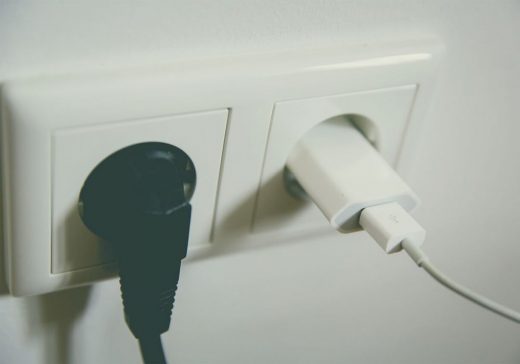Commercial Property Carbon Footprint Reduction, Sustainable Architecture, Eco Building Design
6 Tips to Reduce Your Commercial Properties Carbon Footprint
Green Buildings – CO2 Emissions Reduction Concepts
21 July 2019
6 Tips to Reduce Your Commercial Properties Carbon Footprint
6 Tips to Reduce Your Commercial Properties Carbon Footprint: Every business in the 21st century will be keen to reduce their carbon footprint. Companies of all sizes, and in all areas of commerce and industry, have a responsibility to do their very best to be energy-efficient and as eco-friendly as possible. Striving towards a reduction in carbon emissions gives a business a more socially responsible standing, while also saving money.
One of the main factors the clients consider when supporting an eco-friendly business is the materials they use for their products and how they manage their waste. In that sense, companies must make smart decisions in order to avoid damaging the environment and their businesses. Away Today Rubbish Removal, for instance, is a good example of how you can create a profitable business and raise awareness about taking care of the planet at the same time.
Without further ado, here are a few tips as to how you can reduce your commercial property’s carbon footprint, while cutting costs at the same time.
The Paperless Business
We’ve all become so used to relying on printed reports, invoices, sales receipts and other paper documents, but are they really necessary? A large amount of the paper used in business will be recycled, which is a step in the right direction, but can you cut down further on your use of paper?
With digital technology, reports for meetings can be presented on tablets, laptops or even smart phones; digital purchase orders don’t necessarily need to be replicated in paper, and so on. It will not only cut down on your paper use, but on the expense of paper for printers and other peripherals. Have a close look at what you are printing on paper; you’ll be surprised how much is unnecessary.
Switch to Laptops
It’s a little-known fact that a desktop computer can use as much as 80% more energy than a laptop. Do an audit of the functions your team use a desktop for. Could it be performed as easily and efficiently on a modern, energy-efficient laptop? In the vast majority of cases, the answer is yes, and many laptops will have the same processing power as a desk top computer. That’s a lot of energy usage you can save by switching to laptops.
Efficient LED Lighting
Many companies are making the switch to LED tubes for office, industrial and retail lighting, Why is this? Quite simply, light and heat are among the biggest expenses in any commercial property. When you consider that a halogen light uses as potentially 15 times more electricity to produce the required light than an LED equivalent, you can immediately see considerable savings.
LED tubes also last longer, and as they do not waste energy in the form of heat – as traditional lighting sources do – they are far more energy-efficient and eco-friendly. This is one method of reducing your carbon footprint by a quite considerable amount very quickly.
Power Saving and Switching Off
This is a simple tip, and one that is often overlooked or forgotten in the wake of a busy day. Many peripheral appliances – photocopiers and printers are the main culprits – have a ‘power save’ mode that is not always utilised. This kicks in when the device is not used for a set period, and saves energy over the ready to run mode that would otherwise be in play.
Also, it’s easy to leave a computer, photocopier, printer, or even heaters and lights on at night, when everyone has gone home. This is obviously wasted energy. If any appliance does not need to be switched on when the user is not there, make sure it is switched off. The cost savings will be notable in a short time.
Phone Chargers
You may not be aware that a mobile phone charger, even when it is not in operation, still uses electricity if it is plugged in. For one charger the amount may be very small; if your team have several chargers plugged in, that usage multiplies. Make sure that all chargers are unplugged once they have done their job – and as above, especially overnight.
Insulation and Efficient Heating
In a large commercial building – or in fact in one of any size – it’s often the case that a lot of heat is wasted through poor insulation. As we all know, heat rises, and if the roof is not insulated properly, it will be wasted with ease.
It may be worth having an inspection performed on your insulation – especially if it has not been looked at for a while – and also get a professional in to check out and audit your heating system. Commercial heating systems are far more efficient now than just a few years ago, so you may be wise to upgrade to a more energy-efficient system.
Encourage Cycling and Car Sharing

photo © Helgi Halldórsson/Freddi 2016
This last tip is one that may not save your company money, but it will help with the overall carbon footprint you are contributing to the environment. If you can find an incentive to encourage your workforce to cycle to work, then it’s worth looking at. If you can’t go that far, what about encouraging a car-sharing scheme? These are both ideas that many companies have put into place with success.
These are just a few tips that will help your business become more energy efficient, save money, and also present a more eco-friendly face in your market sector.
Sustainable Architecture Archive
Sustainable Development Report News

image courtesy of Population Matters
Housing Crisis – Population Growth Drives growth
Sustainable architecture aims to reduce the adverse effect of human activities on our world, particularly climate change.
Sustainable Design : article by Trevor Tucker
Sustainable Architecture Design : article by Trevor Tucker
Sustainable Buildings : Brief informal discussion re some of the issues
Sustainable Architecture : David Douglas Centre
Sustainable Architecture Links
Forest Stewardship Council – FSC: www.fsc.org
BREEAM: www.breeam.com
Healthy Building Network: www.healthybuilding.net
Comments / photos for the 6 Tips to Reduce Your Commercial Properties Carbon Footprint page welcome









